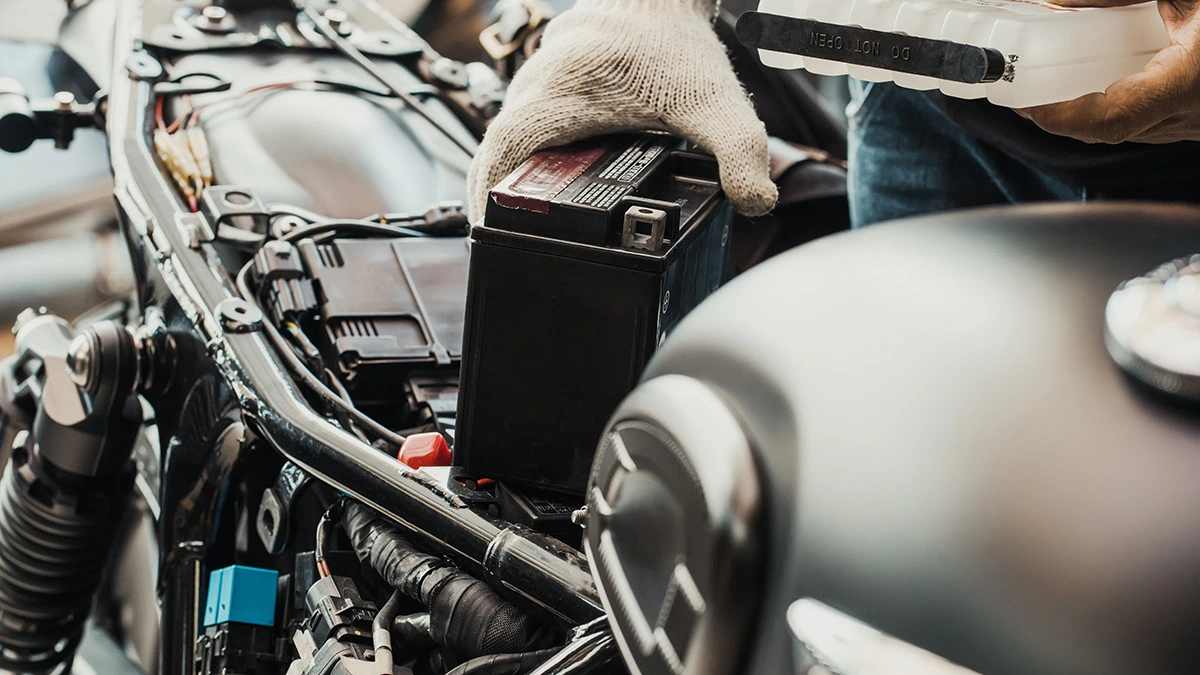First of all, you need to be ready to learn a lot. You are going to need to learn from a bunch of people: your peers, the experts, moto mechanics, etc. You need to have an open mind to be able to apply new skills, tricks, and tips. And even if you do so and follow someone else’s footsteps, there won’t be any shortcuts and quick wins. Prepare yourself to dedicate all of your time to your bike. You may even have to sacrifice a good chunk of your sleep as well.
But what you gain in return is priceless! Learning something new and then applying it is super rewarding. And if things turn out well and you actually build the bike of your dreams, the one that you have as your PC’s wallpaper or the one that is a collective image of all your favorite bike parts you pin on Pinterest, you’ll be on cloud nine!
Well, we are sure you have watched enough YouTube videos to motivate yourself and saved enough designs to get your perfect motorbike idea. Now it’s time to stop dreaming and start doing! We truly believe that anyone is capable of building their own motorcycle without someone else’s help. But where do you start?

Determine the extent of modifications
The first step is the assessment of your current technical capabilities and determining how soon you wish to have your custom bike ready for riding. There are two approaches you can consider:
- Gradual Modifications: Make minor alterations to your project bike over time while keeping it road ready throughout the process.
- Drastic Modifications: Make significant changes to your project bike, resulting in it being temporarily taken off the road until the modifications are completed.
This decision is crucial, and if you have any doubts, we recommend sticking to option 1. By starting with minor modifications on one bike and acquiring a wealth of new skills, you can then apply those skills to more complex builds. Then, you can repeat this process for future builds. Who knows, you might even establish a custom shop catering to others’ needs! After all, that’s how many small custom shops started in the first place!
Choose the base bike

Now, you have to decide on the bike that will be the base for the modifications you have in mind. Perhaps you have already determined what it will be. If not yet, there are a few factors to take into account:
- All older bikes, as a rule, tend to be less complex, making them comparatively easier to work on from both mechanical and electrical perspectives.
- More commonly found older bikes often come with a wealth of information and readily available spare parts.
- However, rare vintage bikes, in our opinion, are best left to those eager for an extra challenge and adversity, as finding parts and information for them can be tough.
- Any bike equipped with a carburetor (predating fuel injection) holds the potential for customization. Fuel injection introduces an added layer of complexity when it comes to complying with emissions regulations, which may not be necessary for your custom build.
Once you have settled on the donor bike for your project, make a checklist of needed parts and make a run through our app or classifieds websites you are going to source them from to see what you are getting into.
Design skills

Naturally, everyone’s taste is different but a good-looking bike looks good anyways. Now it’s time to check your designer skills. Make a sketch of the frame and other custom parts and see how it looks. If the proportions seem distorted, look for the sketches with measurements online and update your design correspondingly. It’s a good idea to sketch all parts on different sheets, then cut them out and combine them to see how they work together.
Do your research
I am sure you know how to use Google and can find any information you need. However, once you decide on the base project bike you are going to work with, we recommend finding a thematic forum dedicated particularly to that brand or even model. They are the best source for specific information as real owners of these motorcycles share their experiences basically in real-time. Besides, there is a solution with models chats in our motorcycle app CryptoMoto!
And, of course, Pinterest and Instagram offer a variety of great design ideas.
As for technical knowledge, we advise you to turn to books. Most of the time, they consist of pretty well-structured and condensed information, which is pretty convenient.
Motorcycle Engineering
When it comes to engineering for motorcycles, there is an abundance of topics to explore and learn if you so desire. Gaining additional knowledge in these areas will not only enhance your enjoyment of the build process but also assist you in ensuring that your modifications are executed correctly.

Some of these topics include the properties of metals, shop products and fluids, bearings, torque, lubrication, fasteners, and threaded inserts.
While technical drawing may seem peculiar amidst these other topics, it holds great importance when fabricating parts for your bike. The ability to design and create accurate drawings before making irreversible cuts in expensive materials proves to be exceptionally useful.
Special motorcycle shop equipment
Having a suitable build platform is immensely beneficial, especially when compared to working on cold concrete in the midst of a chilly winter. Constructing a simple platform using timber from a hardware store (construction pine and plywood work well) can make a significant difference.
There are numerous other items that can prove useful but may not be paramount right away. However, one item that we highly recommend, and should be high on your priority list, is an air compressor.
Essential tools for motorcycle work
Work on a motorcycle results in developing a close relationship with hand tools. Wrenches, screwdrivers, pliers, and an assortment of other tools will become your trusted companions. As you delve deeper into your motorcycle projects, you will inevitably start amassing a collection of tools. It’s worth noting that tool collecting can become somewhat addictive. But we think it’s better to have extra tools than not enough. We are addicted too 😀

One more thing to keep in mind: for American bikes, you will need imperial-sized wrenches and sockets, while Japanese and European bikes require metric-sized tools. However, it’s important to note that there will always be exceptions, and you will soon discover and acquire those specific tools that are needed for your particular bike.
Working on motorcycle mechanical systems
As you gain more experience, there may come a time when you decide it’s necessary to overhaul your motorcycle’s engine. Whether it’s running rough, these issues can be addressed. Older model bikes are relatively simple compared to their modern counterparts, making it quite possible to learn the necessary skills to tackle engine overhauls.
Working on motorcycle electrical systems

Many motorcyclists are intimidated by the electrical systems in their motorcycles. However, in reality, electrical systems can be just as, if not less, daunting than complex carburetors. With enough skill and knowledge, you can confidently approach electrical systems, particularly in older motorcycles. Buy a digital multimeter for voltage measurements – these devices are often affordable and more than sufficient for occasional use while building a bike.
Welding and fabrication
Metalwork involves using basic hand tools to shape and mold metal into the desired forms. If your custom build primarily consists of “bolt-on” parts, you may complete the project without needing tools such as a scribe, hacksaw, and file. However, if you intend to create custom components like a number plate bracket, redeploy your speedometer, or fabricate custom rear-set pegs, you will definitely need metalworking tools and benchwork skills.
After meticulously shaping a piece of metal on the workbench, additional operations are often required. These can include cutting, bending, shrinking, stretching, drilling holes, tapping threads, and joining pieces through bolting, screwing, riveting, or welding to create more complex assemblies. Each operation contributes to achieving the desired form and functionality of the part.

When you want to make more significant modifications to your motorcycle, fabrication and welding skills come into play. While welding is a comprehensive skill and field of study, you can certainly learn enough to customize your motorcycle. Investing in a quality welding machine capable of welding both ferrous and non-ferrous metals will likely require a significant sum, around $1000 or so.
Painting and polishing your motorcycle

Almost every customized bike project requires paint, powder coating, or polishing to achieve the desired finished look. Proper surface preparation is essential if you plan to undertake painting or polishing yourself. After stripping, cleaning, welding, sanding, and making necessary modifications to your bike parts, it’s time for the final finish and reassembly. Surprisingly, you can achieve impressive results in a home workshop using aerosol cans of paint.
Customizing the chassis and frame
To call the bike truly custom, you have to work on the frame. You will find yourself pondering, “What modifications need to be made? What should be cut off and welded on to achieve the desired aesthetic?”
Once you’ve acquired some metalworking and welding skills, you can confidently embark on basic chassis modifications. Or, you might have the ambition to go all out and construct your own frame!

Can you accomplish it? Absolutely! The key is to take that first step and get started. Take action, no matter how small. Perhaps you can begin by printing out a picture of your dream bike and placing it prominently above your computer or in your workshop, or just as your phone wallpaper. Then, take another small step by setting up a saved search for your ideal donor motorbike. Take baby steps if needed but make sure you are moving forward, and you will get there! And if you need help motorcycle community in CryptoMoto app will always help you!








